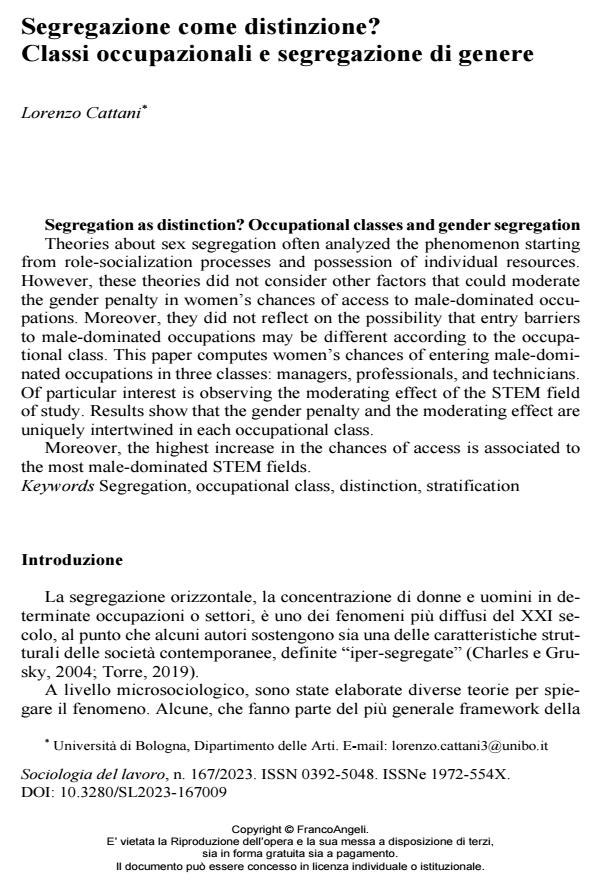Segregazione come distinzione? Classi occupazionali e segregazione di genere
Titolo Rivista SOCIOLOGIA DEL LAVORO
Autori/Curatori Lorenzo Cattani
Anno di pubblicazione 2024 Fascicolo 2023/167
Lingua Italiano Numero pagine 32 P. 189-220 Dimensione file 403 KB
DOI 10.3280/SL2023-167009
Il DOI è il codice a barre della proprietà intellettuale: per saperne di più
clicca qui
Qui sotto puoi vedere in anteprima la prima pagina di questo articolo.
Se questo articolo ti interessa, lo puoi acquistare (e scaricare in formato pdf) seguendo le facili indicazioni per acquistare il download credit. Acquista Download Credits per scaricare questo Articolo in formato PDF

FrancoAngeli è membro della Publishers International Linking Association, Inc (PILA)associazione indipendente e non profit per facilitare (attraverso i servizi tecnologici implementati da CrossRef.org) l’accesso degli studiosi ai contenuti digitali nelle pubblicazioni professionali e scientifiche
Theories about sex segregation often analyzed the phenomenon starting from role-socialization processes and possession of individual resources. However, these theories did not consider other factors that could moderate the gender penalty in women’s chances of access to male-dominated occupations. Moreover, they did not reflect on the possibility that entry barriers to male-dominated occupations may be different according to the occupational class. This paper computes women’s chances of entering male-dominated occupations in three classes: managers, professionals, and technicians. Of particular interest is observing the moderating effect of the STEM field of study. Results show that the gender penalty and the moderating effect are uniquely intertwined in each occupational class. Moreover, the highest increase in the chances of access is associat-ed to the most male-dominated STEM fields.
Parole chiave:Segregation, occupational class, distinction, stratification
Lorenzo Cattani, Segregazione come distinzione? Classi occupazionali e segregazione di genere in "SOCIOLOGIA DEL LAVORO " 167/2023, pp 189-220, DOI: 10.3280/SL2023-167009